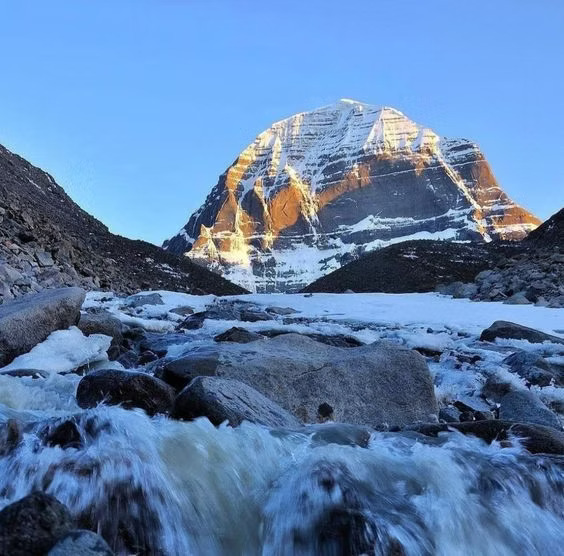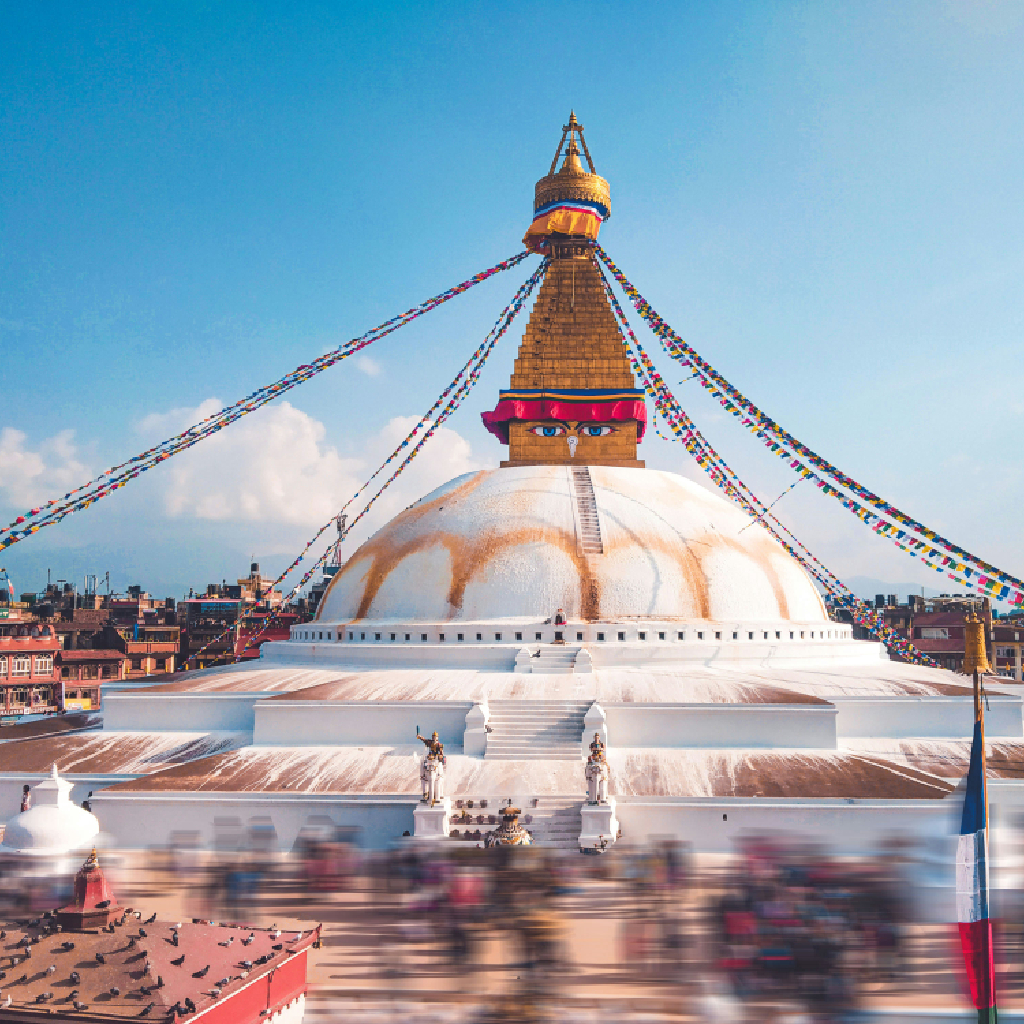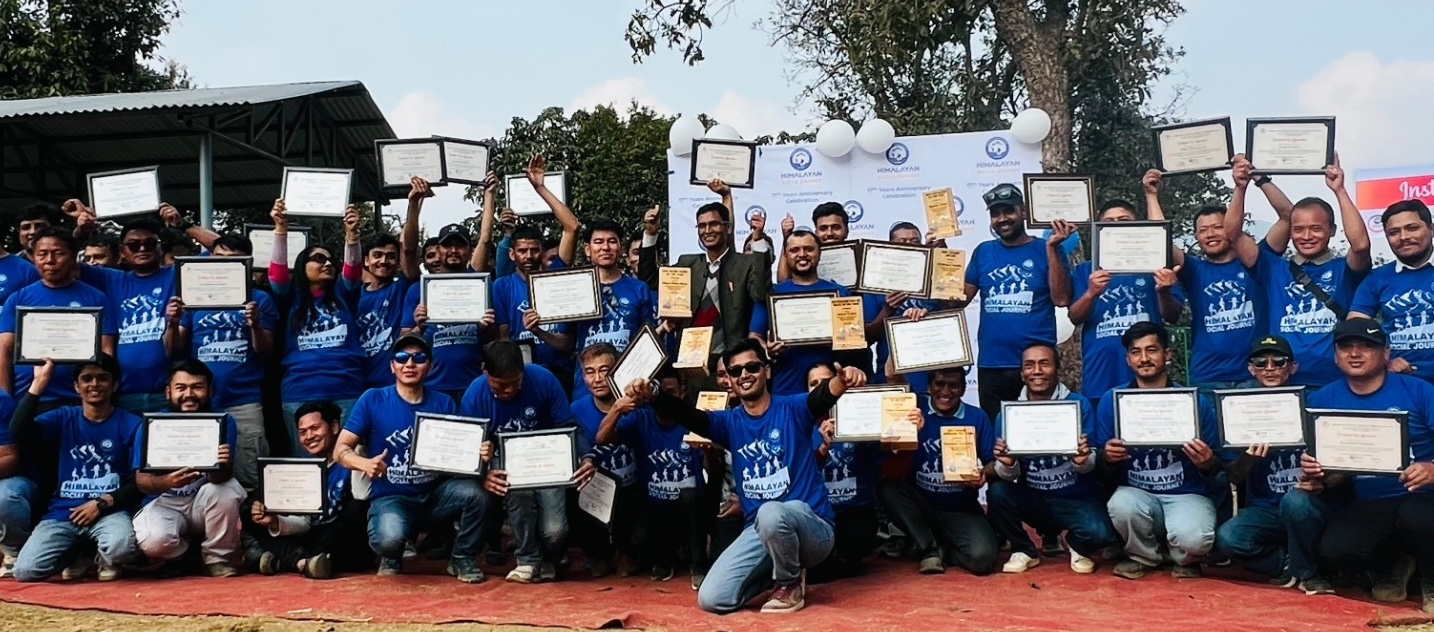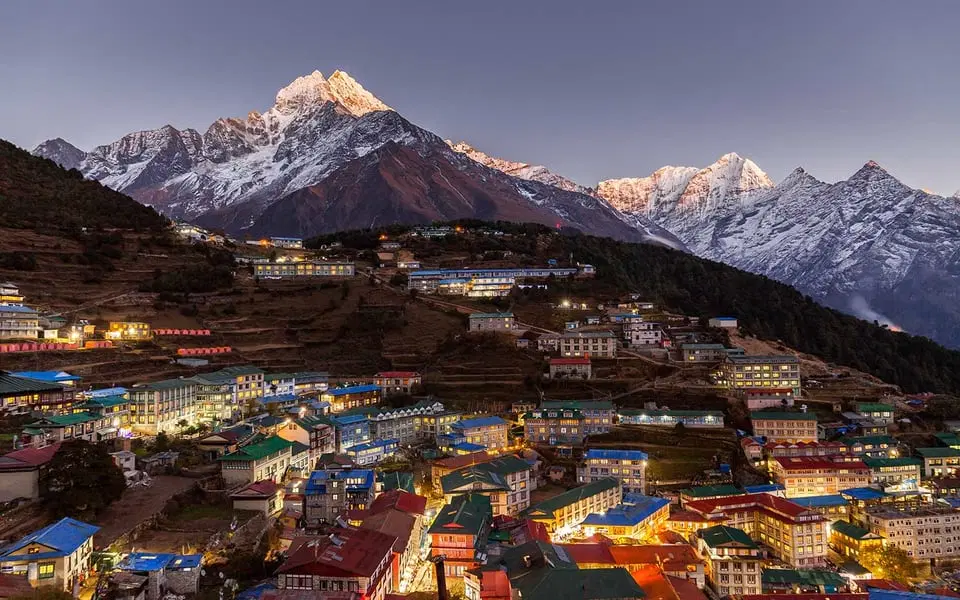Introduction
The Everest Base Camp trek is one of the ultimate adventures for trekking enthusiasts. This iconic journey through the heart of the Himalayas attracts thousands of trekkers each year, offering unparalleled views and a chance to experience the rich culture of the Sherpa people.
Key takeaway: Avoiding common mistakes is crucial for a successful and enjoyable trek to Everest Base Camp. Missteps can lead to serious consequences ranging from health issues to logistical challenges.
In this article, you'll learn:
➸ Essential mistakes to avoid during the Everest Base Camp trek.
➸ Expert tips and insights from Himalayan Social Journey's seasoned guides.
➸ Comprehensive advice on preparation, gear selection, hydration needs, and more.
Avoiding these pitfalls will not only enhance your trekking experience but also ensure your journey is safe and memorable.
1. Skipping Acclimatization
Acclimatization is the process by which your body adjusts to the lower oxygen levels at high altitudes, and it plays a crucial role in high-altitude treks like Everest Base Camp. Without proper acclimatization, trekkers risk developing altitude sickness, a potentially serious condition that can include symptoms such as headaches, nausea, dizziness, and fatigue.
Consequences of Neglecting Proper Acclimatization:
➸ Increased risk of altitude sickness
➸ Severe health complications such as High Altitude Pulmonary Edema (HAPE) or High Altitude Cerebral Edema (HACE)
➸ Forced evacuation from the trek
Tips for Effective Acclimatization:
➸ Ascend Slowly: Gain elevation gradually to give your body time to adapt.
➸ Take Rest Days: Incorporate rest days at higher elevations to allow your body to adjust.
➸ Stay Hydrated: Drink plenty of fluids to aid in acclimatization.
➸ Avoid Alcohol and Caffeine: These can dehydrate you and hinder the acclimatization process.
➸ Listen to Your Body: If you feel unwell, do not ascend further until you have acclimatized properly.
Prioritizing acclimatization ensures a safer and more enjoyable trekking experience.
2. Trekking Without a Guide
Trekking through the remote and rugged terrain of the Everest region without an experienced guide can be fraught with challenges and risks. Navigating the trails can become particularly daunting, especially in areas where paths are less defined or when faced with sudden weather changes.
Risks of Solo Trekking
➸ Navigation Challenges: The trails to Everest Base Camp can sometimes be confusing, with multiple intersecting paths that can lead trekkers astray.
➸ Medical Emergencies: In case of altitude sickness or injuries, immediate medical attention might be required. Solo trekkers might struggle to get help promptly in such scenarios.
Benefits of Hiring a Local Guide
Hiring a local guide brings numerous advantages:
➸ Knowledge of Terrain and Weather: Local guides possess in-depth knowledge about the trail conditions and weather patterns, which ensures safer navigation.
➸ Cultural Insights: Guides can provide rich cultural insights into the local Sherpa communities, enhancing your overall trekking experience.
Enhanced Trekking Experience
A guide also offers support and companionship throughout the journey:
➸ They assist with logistical arrangements such as securing accommodation.
➸ Their presence can boost morale, especially during challenging sections of the trek.
Engaging a guide not only enhances safety but also enriches your adventure with invaluable local expertise and personal support.
3. Underestimating Physical Preparation
Being physically fit is crucial for the Everest Base Camp trek, which involves extensive walking at high altitudes. Without adequate preparation, trekkers may struggle with fatigue, muscle soreness, or even altitude sickness.
Recommended Training Regimen
Building endurance and strength is essential for this demanding journey. A well-rounded training program should include:
➸ Cardio Exercises: Activities like hiking, running uphill, or stair climbing to improve cardiovascular fitness.
➸ Strength Training: Focus on leg muscles with exercises such as squats and lunges.
➸ Flexibility Exercises: Incorporate yoga or stretching routines to enhance flexibility and prevent injuries.
Preparing your body through these targeted workouts will help you handle the physical demands of the trek and enjoy your adventure to the fullest.
4. Improper Gear Selection
Choosing the right trekking gear is crucial for a successful Everest Base Camp trek. Inadequate or inappropriate gear can lead to serious discomforts and complications, such as blisters from ill-fitting boots or hypothermia due to inadequate clothing.
Consequences of Using Inappropriate Gear
➸ Blisters from Ill-Fitting Boots: Trekking with ill-fitted footwear can cause painful blisters, hampering your ability to walk long distances.
➸ Discomfort from Inadequate Clothing: Wearing non-moisture-wicking clothing can result in excessive sweating and chills, making it difficult to regulate body temperature.
Essential Gear for the Everest Base Camp Trek
To ensure a comfortable and safe journey, consider packing the following essential items:
➸ Sturdy Trekking Boots: Opt for waterproof, high-ankle boots that offer good support and traction.
➸ Moisture-Wicking Clothing: Layering is key; pack base layers, insulating layers, and a waterproof outer shell.
➸ Reliable Sleeping Bag: A high-quality, four-season sleeping bag rated for temperatures as low as -10°C (14°F).
Other Essentials:
Trekking poles
Headlamp with extra batteries
Water purification tablets or filter
First aid kit
Investing in quality trekking gear not only enhances comfort but also significantly boosts your chances of completing the trek successfully.
5. Overpacking or Underpacking Your Bag
Packing strategies are crucial when preparing for the Everest Base Camp trek. Overpacking can lead to exhaustion, as carrying excessive weight over long distances and high altitudes can drain your energy quickly. Underpacking, on the other hand, may result in a lack of necessary items, which can be equally detrimental.
Dangers of Overpacking:
➸ Leads to fatigue and slower trekking pace.
➸ Increased risk of injury due to imbalance or strain.
➸ Difficulty in managing the load, especially during steep ascents.
Dangers of Underpacking:
➸ Missing essential gear like warm clothing or first aid supplies.
➸ Lack of adequate food or water purification means.
➸ Inability to cope with unexpected weather changes.
Effective Packing Guidelines:
➸ Balance Comfort and Weight: Prioritize lightweight, multi-functional items.
➸ Essential Gear Only: Include sturdy trekking boots, moisture-wicking layers, a reliable sleeping bag, and basic toiletries.
➸ Weight Management: Aim for a pack that doesn't exceed 15-20% of your body weight.
By adhering to these packing strategies, you ensure a well-prepared and enjoyable journey to Everest Base Camp.
6. Neglecting Hydration Needs on the Trail
Staying properly hydrated while trekking is crucial for maintaining energy levels and preventing altitude-related issues. Dehydration can worsen the symptoms of altitude sickness, so it's important to recognize and address it quickly.
Signs and Symptoms of Dehydration
Look out for these signs that you may be dehydrated:
➸ Dry mouth and throat
➸ Dizziness or lightheadedness
➸ Headache
➸ Fatigue
➸ Dark yellow urine
Tips for Water Management
To make sure you're drinking enough water, try these strategies:
➸ Carry a Sufficient Supply: Always start your trek with plenty of water, aiming for at least 3 liters per day.
➸ Purify Drinking Water: Use methods like:
Water purification tablets
Portable water filters
Boiling water when possible
➸ Stay Consistent: Drink small amounts regularly rather than waiting until you feel thirsty.
➸ Monitor Urine Color: Aim for light-colored urine as an indicator of proper hydration.
Essential Hydration Gear
Make sure you have these items with you for effective hydration:
Sturdy water bottles or hydration bladders
Water purification tablets or a portable filter
Electrolyte supplements to replenish lost minerals
Managing your hydration properly can greatly enhance your experience on the Everest Base Camp trek, keeping you safe and enjoying every moment of the journey.
7. Miscalculating Costs Involved in the Trekking Journey
Budget planning for trekking is essential to avoid financial stress and ensure a smooth experience. The potential costs on your way to Everest Base Camp can be broken down into several categories:
➸ Accommodation Fees: Lodging prices can vary, but budget $5-$10 per night for teahouses.
➸ Meals: Expect to spend around $20-$30 per day on food.
➸ Permits: Necessary permits like the Sagarmatha National Park Permit and TIMS card cost approximately $50 in total.
Hidden expenses during treks often catch trekkers off guard:
➸ Additional gear or supplies purchased last minute.
➸ Tips for guides and porters.
➸ Extra costs due to unexpected situations like flight delays or medical emergencies.
A detailed cost estimation should include these elements to avoid surprises. Budgeting adequately not only covers basic expenses but also provides a safety net for unforeseen circumstances.
8. Skipping Meals While Trekking Upwards
Nutrition during treks is crucial for keeping your energy levels up, maintaining stamina, and recovering effectively. If you skip meals while trekking, it can have a significant negative effect on your performance on the trail. You may experience fatigue, dizziness, and even altitude sickness as a result. That's why it's important to plan your meals ahead of time so that you have enough fuel to conquer the difficult terrain of the Everest Base Camp trek.
Quick & Nutritious Meal Options
➸ Trail Mix: A mix of nuts, dried fruits, and seeds provides a powerful source of energy and essential nutrients.
➸ Energy Bars: Convenient and packed with calories, these bars are perfect for quick snacks.
➸ Dried Meat/Jerky: High in protein and easy to carry, jerky helps sustain muscle strength.
➸ Instant Oatmeal: Lightweight and easy to prepare with hot water for a warm, hearty meal.
➸ Fresh Fruit: Apples, oranges, or bananas offer quick energy boosts and essential vitamins.
Energy management strategies on the trail emphasize eating small, frequent meals rather than large ones. This approach helps maintain consistent energy levels throughout the day without overburdening your digestive system.
9. Rushing Through The Journey Instead Of Enjoying It Fully
Racing through the Everest Base Camp trek can lead to significant risks such as increased chances of experiencing altitude sickness. Pacing yourself effectively while trekking is crucial. Taking regular breaks allows your body to adjust to the altitude and prevents overexertion.
Benefits of taking breaks regularly:
➸ Reduced Risk of Altitude Sickness: Gradual ascent and frequent rest help your body acclimate.
➸ Enhanced Enjoyment: Pausing to soak in the breathtaking scenery and local culture enriches your trekking experience.
➸ Improved Stamina: Short rests can rejuvenate your energy levels, making each leg of the journey more manageable.
Remember, the journey is as important as the destination. Enjoy every moment and make memories along the way.
10. Ignoring Local Customs And Culture Along The Way
Respecting local customs and culture is vital during your trek to Everest Base Camp. Engaging positively with communities encountered en route not only enriches your experience but also fosters goodwill.
Ways to engage with local communities:
➸ Learn basic phrases: A few words in Nepali can go a long way in showing respect.
➸ Respect local traditions: Observe customs like removing shoes before entering homes or monasteries.
➸ Support local businesses: Purchase goods from local shops and eat at local teahouses.
➸ Participate in cultural practices: Attend local festivals or events if possible.
Showing cultural respectfulness during treks enhances mutual understanding and makes your journey more meaningful.
Conclusion: Prepare Effectively For A Successful Adventure To Everest Base Camp!
Embarking on the Everest Base Camp trek is a once-in-a-lifetime experience, filled with awe-inspiring vistas and the majestic beauty of Mount Everest. To fully enjoy every moment amidst these breathtaking landscapes:
➸ Emphasize preparation: Proper acclimatization, physical training, and strategic packing can make a substantial difference.
➸ Engage with local culture: Respecting and learning from the local communities encountered along the way adds depth to your journey.
Start planning your unforgettable journey today with Himalayan Social Journey's expert guidance!
With over 18 years of experience and a team of seasoned guides, we ensure that your trekking adventure is both safe and memorable. Avoid common mistakes, prepare effectively, and get ready for an extraordinary adventure to Everest Base Camp.





















